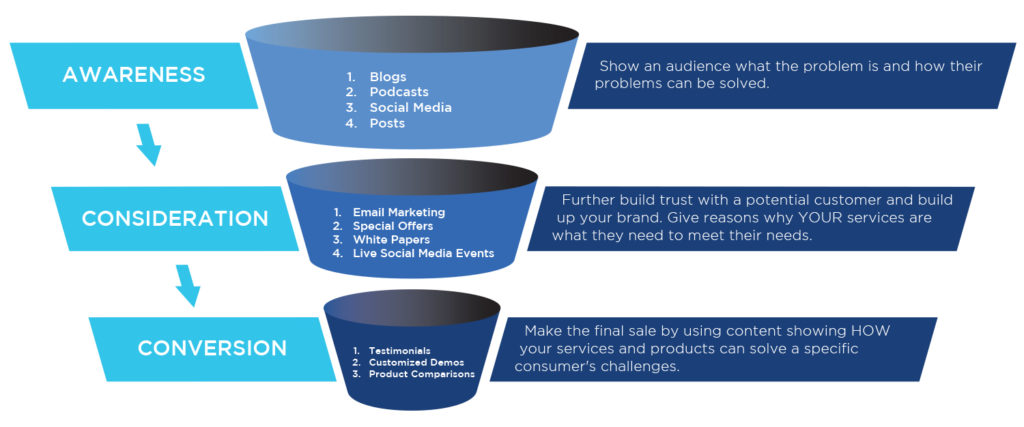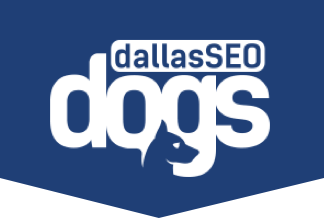Diving Down The Content Marketing Funnel

Let’s face it, your digital marketing strategy relies on content. Sure, back-end technical SEO is important, but the content on your site is the actual information Google crawls, it’s what draws traffic to your site and it’s what gives your domain authority. Quality content creation should be your goal if your brand aspires to be an industry leader. Understanding the “content marketing funnel” can help you produce the most effective content possible.
What is a Content Marketing Funnel and Why Does it Matter?

The funnel concept is one of the oldest marketing practices in any industry. Funnels help businesses map out their customers’ experience from the initial product introduction to the actual sale. The funnel aspect comes into play because at the top (start) of the funnel, the number of potential customers is much larger than at the end. As you move farther along in the customer’s decision-making journey, rejections and abandonment decrease the number of remaining prospects. Content marketing funnels are part of a strategic method of reeling in potential customers with content that helps create conversions. Keep in mind that even though we’re using the funnel as a method, your content should focus on a specific target audience that is already primed to invest in your product. The content’s focus helps to widen the narrow section of the funnel and makes all of your content efforts a smooth transition to that final conversion. Let’s take a look at the different layers of a content marketing funnel and how you can make it work for you!
Top of the Funnel: Awareness
Awareness focuses on the customers coming to your site for the first time. The chances are lower that you will directly convert a new visitor into a customer, so consider this section as a chance to provide content that engages them and makes them more likely to return and convert later. The trick to succeeding at this point in the content marketing funnel is to know what your audience wants and needs — and how your services can meet their needs. Through keyword research, for example, you can uncover hot topic questions that will reveal exactly what your prospects are looking for. Content-wise, this section of the funnel can be mastered via:
- Blog posts
- Social media posts
- Webinars
- Videos

Middle of the Funnel: Consideration
The goal of consideration is to actually start leading interested visitors to become customers. You’ve already given them a free taste of what you’re about within the awareness section. Now, convince them that you have the solution to their problem. At this stage, you’re still trying to build trust. You may want to provide a “gift” in exchange for a direct communication method, such as an email address. Email marketing allows you to emphasize on a more personal level what separates you from the competition. Strengthen your audience’s image of your business with:
- Content that shows how your product works
- Descriptions of your product and services
- Content that displays your unique qualities
Bottom of the Funnel: Conversions
Now that you’ve shown your leads why they need you, it’s time to convert them! Remember, this is the most narrow point of the funnel, so the potential customers that stick around are the ones interested in your services. Convince them to convert with:
- A great testimonials page
- Reviews
Need Help Conquering Content at Any Phase of the Funnel?
Regardless of what stage of the funnel potential customers are in, your content should clearly reflect why your brand is the obvious choice. Creating content is a job in itself! Dallas SEO Dogs content marketing team can help convince prospects that your company has a solution for their problem. Let’s chat — simply fill out the form below!
